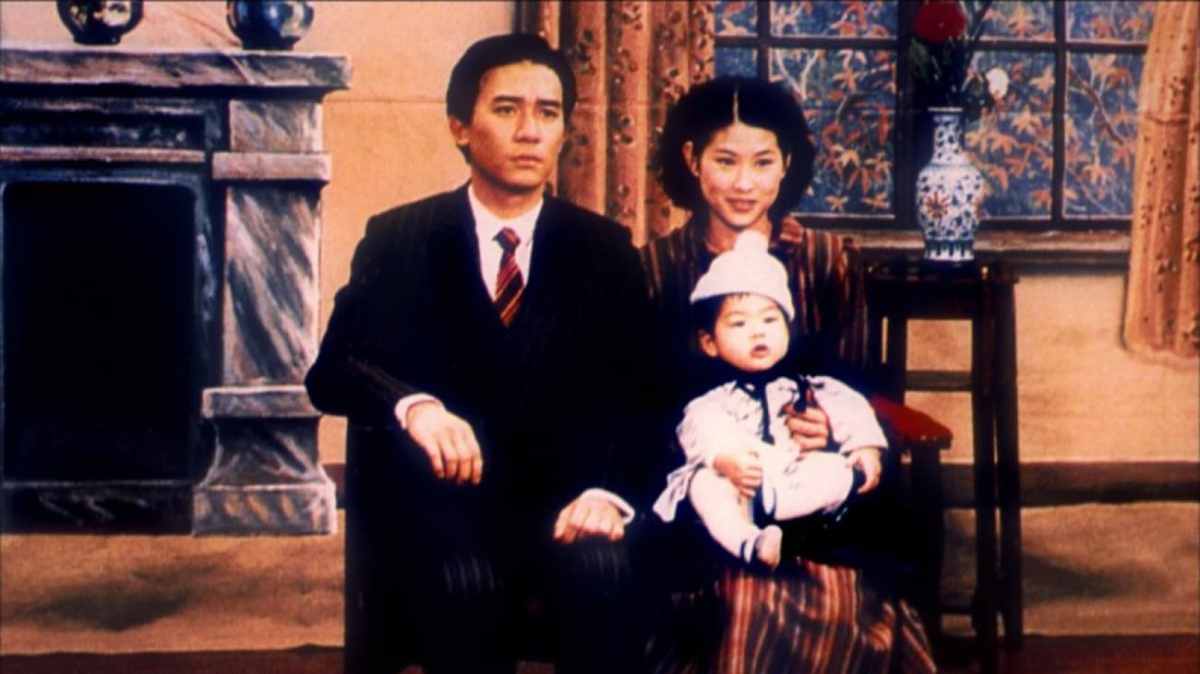This historical epic about post-WWII Taiwan is one of Hou’s most ambitious and encompassing works, and also his first true masterpiece.
Dir. Hou Hsiao-Hsien
1989 | Taiwan | Drama/History | 157 mins | 1.66:1 | Mandarin, Min Nan, Japanese, Shanghainese & Cantonese
M18 (passed clean) for coarse language
Cast: Tony Leung, Hsin Shu-fen, Chen Sung Young, Jack Kao, Ho Ai-yun, Li Tian-Lu
Plot: A story of a family embroiled in the tragic White Terror that was wrought on the Taiwanese people by the Kuomintang government after their arrival from mainland China in the late 1940s.
Awards: Won Golden Lion (Venice); Won 2 Golden Horse Awards – Best Director, Best Leading Actor. Nom. for 5 Golden Horse Awards – Best Feature Film, Best Original Screenplay, Best Cinematography, Best Film Editing, Best Sound
Source: Chinese Taipei Film Archive
Accessibility Index
Subject Matter: Heavy
Narrative Style: Complex
Pace: Slow
Audience Type: General Arthouse

(Reviewed at the Hou Hsiao-Hsien retrospective – first published 26 Mar 2016)
Spoilers: No
The first Hou Hsiao-Hsien picture to win a prestigious award at a top-tier festival (snagging a well-deserved Golden Lion at the Venice Film Festival no less), A City of Sadness is also the esteemed director’s first true masterpiece.
Often regarded as the most important work of Taiwanese cinema, Hou’s film brings us back to post-WWII Taiwan during the transitional if tumultuous period of 1945-1949.
As the prologue economically suggests: a man fixes a light bulb, while in another room his wife is in labour. We then hear firecrackers as the country celebrates the end of Japanese rule.
This is the dawn of a new era, though not necessarily one that is marked by peace and understanding. Hou’s historical epic, running twenty minutes shy of three hours, is a massive undertaking. It is also his most formally daring work up to that point of his career.
Centering on a specific family of four brothers (one missing from war, one mentally disturbed after returning from war, one mute, and an elder brother who runs a business), Hou charts their stories intimately, but sets them against the wider socio-historical backdrop where unrest, prejudice and fear affect how they relate to themselves and come to terms with a world in constant flux.
The first Taiwanese film to use direct sound – as a result Tony Leung, who could not speak convincing Mandarin or Min Nan, had his character made a deaf-mute.
A City of Sadness is not just an ambitious take on history, but also a reflection of a seismic shift in an entire country’s psyche and stance towards ideology, in this case, the perils of communism.
Told in an elliptical, loose way that is not always chronological in nature, Hou’s engagement with spatial and temporal elements is in full fledge here. There is ample use of trademark long takes, some even held in long shots.
One particular long shot stands out: there are people assaulting each other in the open, while we see a train carriage in stasis, partially hidden. Through this, Hou is implying that the conflict is so serious that a train has to halt midway (we don’t even see how the fight started).
It can’t get any more obvious that the train is symbolic of Taiwan’s predicament at that time. Many such scenes that reveal more than they really are are littered across the film, and they are markers of Hou’s mastery of the medium.
The first of the director’s ‘historical’ trilogy made after martial law was lifted in Taiwan in 1987, A City of Sadness is an encompassing work that is both a return to a traumatic past, and a beautiful evocation (through its poetic cinematography and indelible music) of a time passed.
Grade: A+
Trailer:
Music:












[…] and Dust in the Wind (1986), and the ‘historical’ trilogy comprising of such esteemed works as A City of Sadness (1989), The Puppetmaster (1993) and Good Men, Good Women […]
LikeLike
[…] and problematic, disenfranchised youths continue to permeate some of his later works such as A City of Sadness (1989) and Goodbye, South, Goodbye (1996) respectively. With standout performances and a poignant […]
LikeLike
[…] would provide a counterpoint to his next set of much more serious and mature dramas (starting with A City of Sadness (1989)) that tackle history, tradition and […]
LikeLike
[…] and Dust in the Wind (1986), and the ‘historical’ trilogy comprising of such esteemed works as A City of Sadness (1989), The Puppetmaster (1993) and Good Men, Good Women […]
LikeLike
[…] after the one-two punch of A City of Sadness (1989) and The Puppetmaster (1993), Good Men, Good Women completes Hou Hsiao-Hsien’s […]
LikeLike
[…] to catch some of his acclaimed masterpieces like A Time to Live, a Time to Die (1985) and A City of Sadness […]
LikeLike
[…] Taiwanese director Hou Hsiao-Hsien. Early films like A Summer at Grandpa’s (1984) and A City of Sadness (1989) feature them nostalgically as bridges between the countryside and the city, or as backdrop […]
LikeLike
[…] Ang’s Eat Drink Man Woman (1994), and using Chinese title cards that are reminiscent of Hou’s A City of Sadness (1989), “The Veiled Willow” is very much the synthesis of Eva’s reverence for the medium and […]
LikeLike
[…] of fate and time. He would further formalise this rigourous style in his two masterpieces—A City of Sadness (1989) and The Puppetmaster […]
LikeLike
[…] with A City of Sadness (1989), The Puppetmaster represented a one-two triumph of such astonishing cinema that I doubt […]
LikeLike
[…] such masterpieces of Chinese cinema portraying 20th century Chinese history as Hou Hsiao Hsien’s A City of Sadness (1989) and The Puppetmaster (1993), Tian Zhuangzhuang’s The Blue Kite (1993) and Chen Kaige’s […]
LikeLike